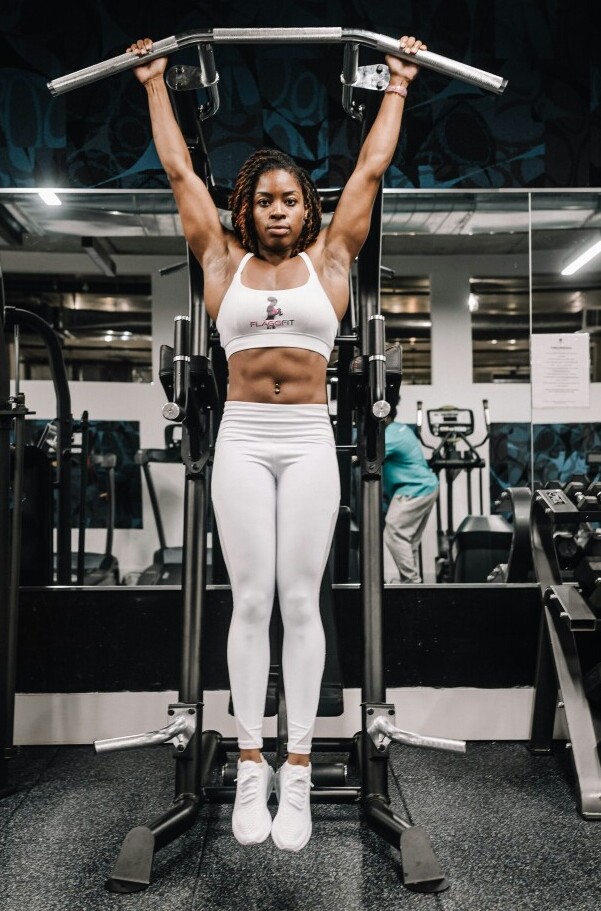
Strength training is all about resistance training. Using weights to build muscle strength and size, this practice is a powerhouse for anyone, but it’s especially key for women over 50.
Once menopause hits, it’s not just hot flashes you have to keep an eye on. Bone mass can take a dive, with women losing up to 10% around this period. That’s where strength training comes in to help keep bones strong and potentially even reverse some of that loss. Whether it’s free weights, resistance bands, or bodyweight exercises, they all play a part in boosting your bone health.
Don’t forget about the metabolism dip that often comes with age. Incorporating strength workouts into your routine is like hitting the refresh button. It helps preserve muscle mass, gives your metabolism a little kick, and can make managing weight easier. Less of that muscle means a slower metabolism and, frankly, not as fun times fitting into your favorite jeans.
Strength training isn’t just about the physical — it has serious mood-lifting benefits, too. It boosts those feel-good chemicals that help manage mood swings often experienced during menopause. Imagine lifting weights and lifting your spirits at the same time. That’s a win-win, right?

The bottom line: Strength training is a must-have in your fitness toolkit. It supports bone health, keeps muscles strong, and gives your mood a positive boost. It’s all about quality of life, ensuring you’re living your best at every stage.
Getting Started: Strength Training Tips for Women Over 50
Jumping into the world of strength training might feel like stepping into a whole new universe, but it doesn’t have to be daunting. Start simple with bodyweight exercises, like squats and planks. These not only lay the groundwork for building strength but also help you nail down your form without any extra equipment.
Resistance bands are your new best friend. They add a layer of challenge to your workout without needing heavy gear. As you get comfortable, you’ll naturally progress and see those gains in strength and confidence. Plus, they’re easy on the joints, making them perfect for just about anyone, anywhere.
Training three to four days a week is your sweet spot. Aim for sessions that last between 30 to 60 minutes. It’s the perfect balance – enough to push those muscles, but with plenty of rest days to allow them to recover and grow stronger.
Never underestimate the power of a strong core. Focusing here means better balance, stability, and posture, helping you carry yourself with ease and preventing those pesky everyday aches.
For those just stepping out onto the gym floor, fixed resistance machines are a great place to begin. They guide your movements, ensuring you’re using the proper form while gradually building strength with minimal injury risk.

Finally, when you’re performing exercises, slow and controlled reps should be your mantra. It’s all about engaging the muscle fully, ensuring every rep counts. Avoid relying on momentum because that’s just wasted effort. Take it slow, feel the burn, and watch those muscles grow.
Essential Exercises for Women Over 50
Getting into the exercise groove? Here’s a lineup that’ll have your whole body feeling stronger in no time.
Start with the leg press. It’s brilliant for targeting those quads, glutes, calves, and hamstrings. You’re hitting several key muscle groups with one move.
Add in some leg extensions to zoom in on your quads. These are simple yet effective in building strength in that lower body.
Seated or lying leg curls are next up for honing those hamstrings, balancing your leg strength nicely.
Don’t skip walking lunges. They target the whole lower body and are flexible enough to do with or without weights, inside or outdoors.
Looking at the upper body, machine chest presses are excellent for working the pecs, delts, and triceps all at once. Big muscle groups with one machine.
Barbell bicep curls may seem basic, but they pack a punch in boosting arm strength, which is useful for daily tasks.
The assisted dip machine is another gem, focusing on strengthening your chest and triceps. Great for that extra push in upper body conditioning.
Seated rows are a personal favorite for back and upper body strengthening. It’s all about that pull-back motion that hits those key muscles.
Give the assisted pull-up machine a whirl. Perfect for beginners, this machine smooths the path to upper body and core strength.
Finish strong with the overhead press. This move is all about strengthening your shoulders and upper body, rounding out a well-balanced workout regimen.
Understanding Muscle Aging and Adapting Workouts

Sarcopenia, the gradual loss of muscle mass with age, can feel like a slow-motion train wreck for muscles, especially the glutes and legs. But here’s the deal: acknowledging it is the first step to addressing it. Different muscle groups, like those big powerhouse muscles in your thighs, may need different weights due to their unique fiber compositions and sizes.
When you’re planning your workouts, it’s important to give each muscle group the attention it truly deserves. Not all muscles are built the same, so your approach to them shouldn’t be either. Customize those weight choices and exercises to suit each unique group. It makes sure you’re not only working out efficiently, but also safeguarding against injury.
Engage, focus, and be attentive to how your body responds. Listen to what your muscles are telling you. If things feel off, it’s cool to change things up. Sometimes, unconventional tweaks can bring the biggest benefits.
Techniques like muscle-specific training and exercises tailored to combat sarcopenia are your best friends in this journey. Lean into it; find that balance where you feel both guided and challenged.
Remember, it’s about quality, not just hammering out reps. Form matters more than anything when battling the effects of aging muscles. It’s about making the most out of each movement whilst ensuring sustainability.
The Science Behind Strength Training and Weight Usage
Muscle hypertrophy is the secret sauce behind getting stronger and building those muscles up. It happens when tiny tears in the muscle fibers repair themselves, growing back even stronger. It’s a bit like how a callus forms, toughening up the skin after friction.
The principle of progressive overload is your ticket to continuous improvement. It’s simple: gradually increase the weights, frequency, or number of repetitions to keep those muscles guessing and growing. The idea is to step it up, but just a bit at a time. It’s not about maxing out every session. Instead, it’s about smart, sustainable progression.
Craft a plan that’s realistic for you, one where each workout builds on the last. It’s more valuable to be consistent and challenge yourself incrementally rather than rush into heavy lifting. Over time, those small, incremental steps you take add up to significant improvements in strength and endurance.
Think of each workout as a piece of the puzzle that fits into the larger picture of your strength training journey. Patience, combined with hard work, is the name of the game when mastering the art of strength training.
With a solid understanding of the science behind resistance training, you’re not just lifting weights—you’re laying the groundwork for a healthier, stronger future. Believe in the process, and you’ll see the results.
Thanks for reading. Kindly drop your comments, questions, and experiences in the comment sections. Till I come your way again in my next post, remain fit.
